
Today we will talk briefly about the infamous Birkin bag by Hermès, how Hermès has amassed an multi-billion dollar empire built on exclusivity and anti-marketing, and how you can incorporate some of those strategies into your brand. [A THREAD]: 
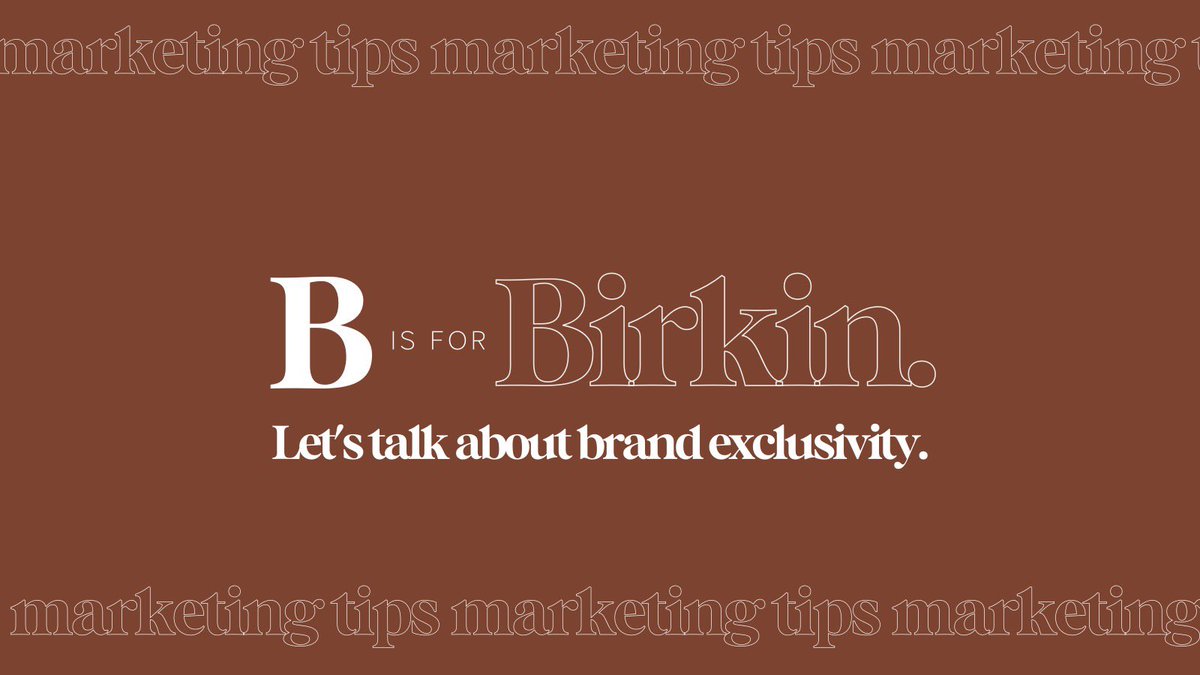
First let’s do a brief history lesson on #Hermès. 
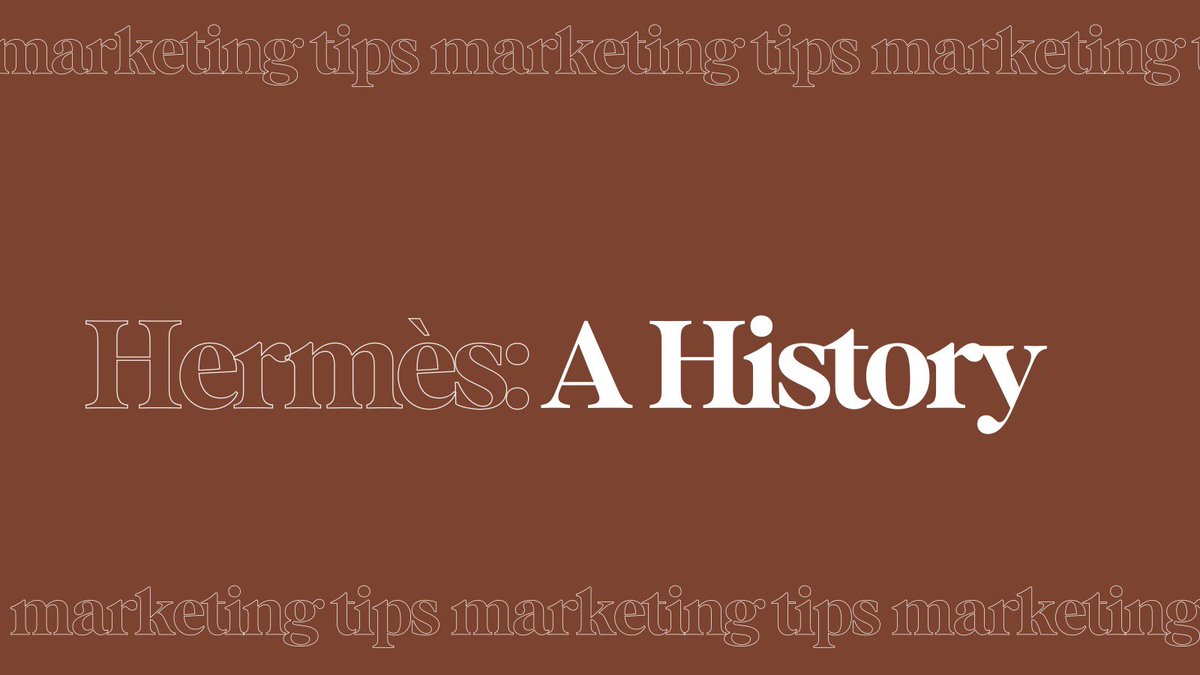
In 1837, a man named Thierry Hermès established #Hermès as a harness workshop in Paris dedicated to serving European noblemen. 
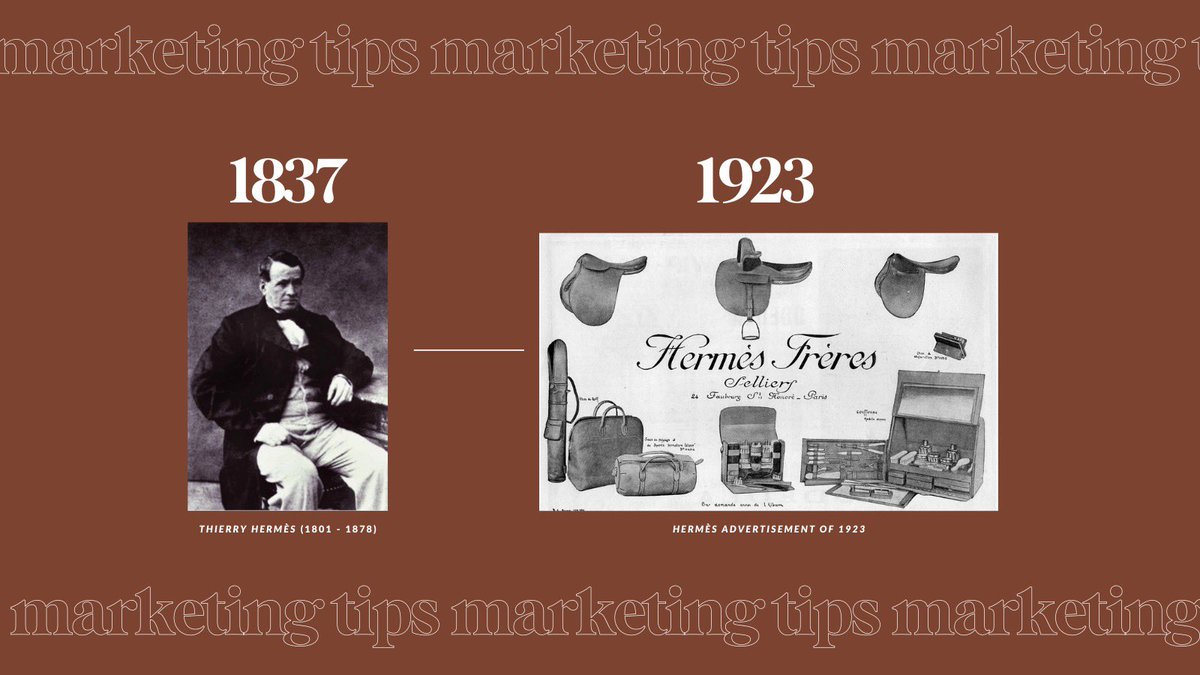
Among Hermès first clientele were horses. Over the next few decades, Hermès became the most famous saddlery retailer and produced leather bags to feed horses with, house the saddles and they carried accessories for riders such as boots, whips and riding hats.
Over the years, #Hermès began to expand and produce a variety of luxury goods that are categorized among 14 product divisions including fragrances, watches, jewelry and ties.
In the 1930s, the company entered the United States with an initial collaboration with Neiman Marcus. The leather goods and saddlery divisions are Hermès biggest contributor to the company’s revenues, followed by ready-to-wear, accessories, silk, textiles and fragrances.
Today we will be focusing on their famous purses, and no, not the regular ones. (We laughably say “regular” because the ordinary Hermès bags range around $4,000 and up.) We will focus today on the exclusive, most sought after bag — the Birkin bag.
In 1983, the former Hermès CEO Jean-Louis Dumas was seated next to actress Jane Birkin on a flight from Paris to London. As she tried to fit her bag into the overhead compartment, it fell out, spilling all of its contents. 
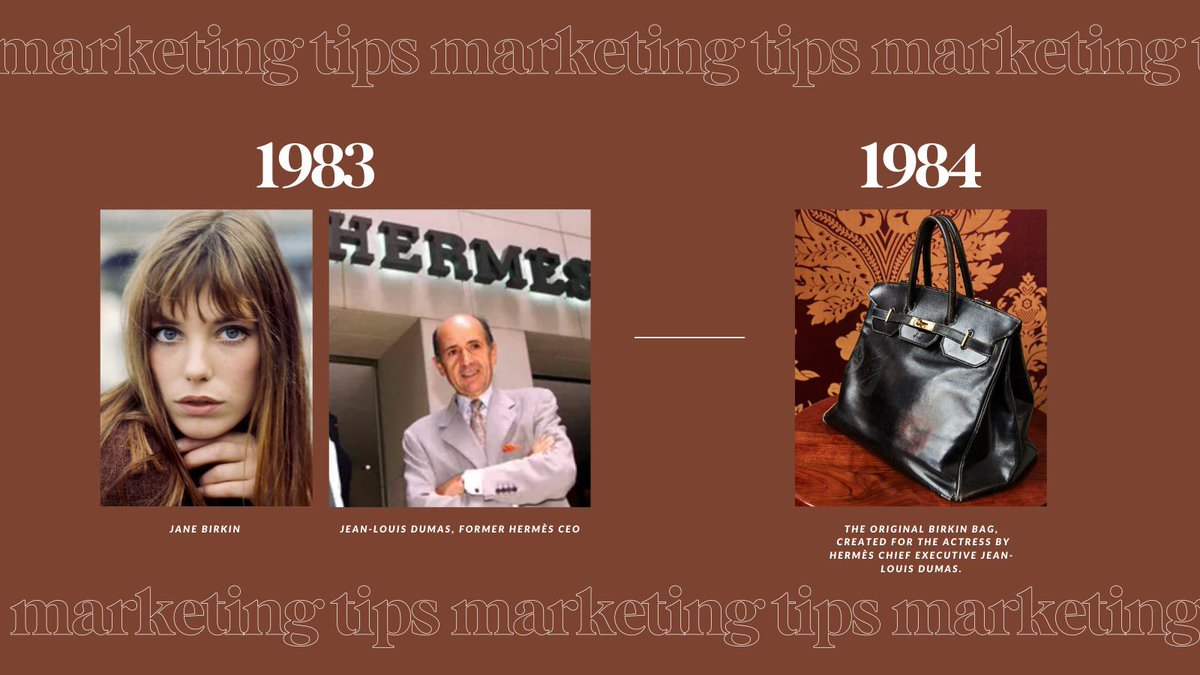
She complained to Jean-Louis Dumas about her bag’s lack of quality and how hard it was to find a suitable bag.
In 1984, the Birkin bag was born.
In 1984, the Birkin bag was born.
So you’ve seen Birkin bags.
You can probably agree that it’s not the most incredible thing you’ve ever seen. So why the hell do people spend upwards of $300,000 on a bag?
How did Birkin bags become so desired that they’re now considered investment tools?
You can probably agree that it’s not the most incredible thing you’ve ever seen. So why the hell do people spend upwards of $300,000 on a bag?
How did Birkin bags become so desired that they’re now considered investment tools?
BRAND EXCLUSIVITY.
Hermès marketing strategy focuses on exclusivity, scarcity and craftsmanship.
The aura of exclusivity is important to the company because it does not want to portray the brand and its products as mass-market luxury or even premium luxury.
Hermès marketing strategy focuses on exclusivity, scarcity and craftsmanship.
The aura of exclusivity is important to the company because it does not want to portray the brand and its products as mass-market luxury or even premium luxury.
Hermès’ philosophy and aim has always been to remain “ultra-premium luxury,” which is produced in small quantities, inaccessible to the masses, and afforded by the very few.
Hermès does not have a marketing department because it does not follow any traditional marketing strategies.
They don’t launch region-specific collections or product offers.
They don’t have sales.
The same product collections are sold everywhere in the world.
They don’t launch region-specific collections or product offers.
They don’t have sales.
The same product collections are sold everywhere in the world.
Hermès only hires 200 craftsmen per year and there is a mandatory 2-year training before he or she can even begin to construct a product in the Hermès portfolio.
Hermès anti-marketing approach means that they’ve invested little to no budget on advertising and instead focus on establishing long-term relationships with their clients.
The Birkin bag is considered to be a symbol of wealth, status and is highly appreciated by the elite of the world.
There are a few factors that make it so desirable:
There are a few factors that make it so desirable:
• Price – the simplest Birkin bag starts from $11,900. Costs depend on the type of leather and whether any exotic skins were used until the process.
The most expensive handbag ever sold at an auction was the Niloticus Crocodile Himalaya Birkin 30. It’s made of rare, almost-albino crocodile skin with 242 diamonds on its 18-karat gold hardware.
It was auctioned off for 2.98 million dollars.
It was auctioned off for 2.98 million dollars.
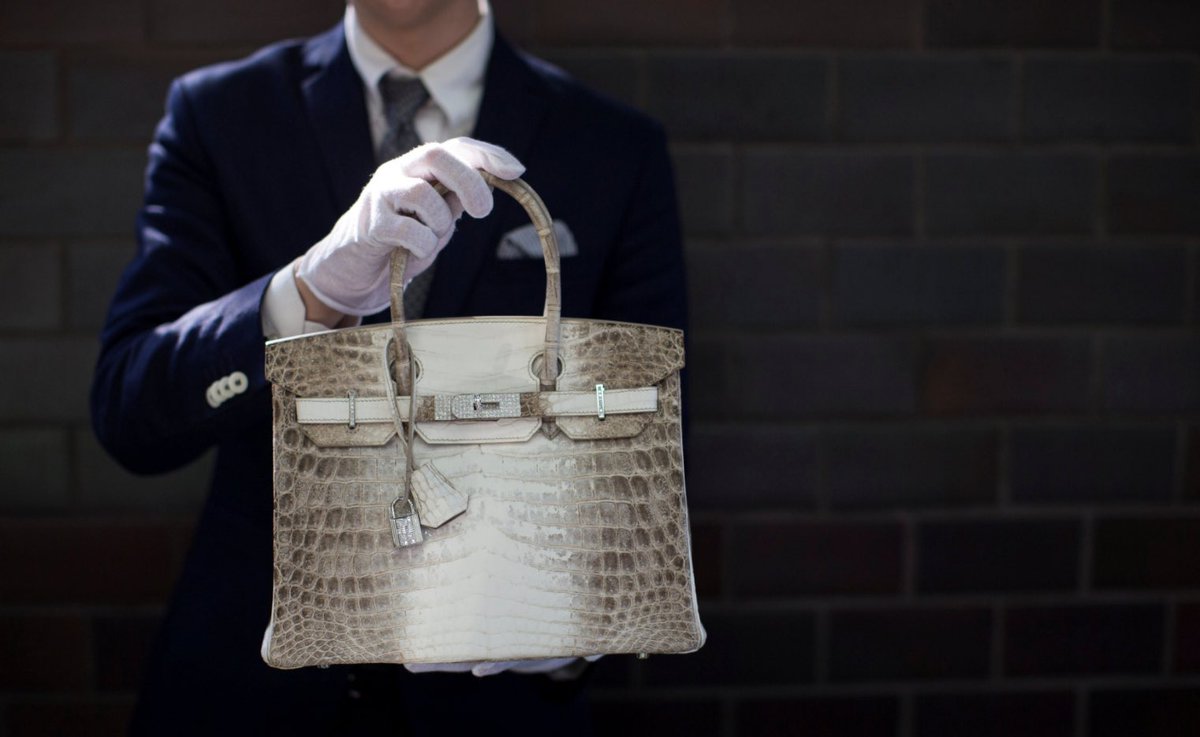
Hermès produces only 1 or 2 of these per year, making the Himalaya Birkin model the most rare and desired one in the world.
• Exclusivity – Even if you have the money, don’t expect to walk in a Hermès store and request to buy a Birkin, it doesn’t work that way.
You must have connections, a history with the brand before even being offered to purchase from the Birkin collection.
You must have connections, a history with the brand before even being offered to purchase from the Birkin collection.
If you’ve never purchased anything from Hermès, it’s best to not even try asking them for a Birkin bag.
First you must build your portfolio with Hermès before you’re offered the chance to buy a Birkin.
First you must build your portfolio with Hermès before you’re offered the chance to buy a Birkin.
• Craftsmanship: Hermès shuns the idea of mass production.
Birkin bags are handmade in France by one artesian in a production process that takes 48 hours.
Birkin bags are handmade in France by one artesian in a production process that takes 48 hours.
So what does this mean for you and your brand? How can you position your brand to become one of the most sought after and desired brands?
Here’s how you can incorporate Hermès anti-marketing, brand exclusive strategies into your brand:
If your strategy and brand is based on low prices and affordability, these tactics may not work for you.
If you’re positioned as a “high-end” or “luxury” brand or desire to be, you can learn from Hermès.
If you’re positioned as a “high-end” or “luxury” brand or desire to be, you can learn from Hermès.
01. Create the illusion of scarcity.
People buy things based on perceived value. When a product or service has a reputation of being scarce, people are willing to spend more for it to be one of the few that has it.
People buy things based on perceived value. When a product or service has a reputation of being scarce, people are willing to spend more for it to be one of the few that has it.
If you’re selling a high-quality product/service and want to differentiate yourself, you can design or create an exclusive product or service for premium clientele with a higher price.
(i.e. limited edition products, making a waitlist)
(i.e. limited edition products, making a waitlist)
This also means that your products and services should never be advertised as “affordable,” or “discounted.”
Have you ever seen or heard of a Birkin on sale? Didn’t think so.
Have you ever seen or heard of a Birkin on sale? Didn’t think so.
02. Build your brand reputation.
You can put whatever price tag you want on your brand’s product or services as long as those prices are justified in the eyes of your customers and clients.
You can put whatever price tag you want on your brand’s product or services as long as those prices are justified in the eyes of your customers and clients.
Hermès justifies their prices by their brand reputation (they’re known for their products), exclusivity (you can’t get them everywhere), and the materials they use (exotic and rare animal hides).
If you’ve built your brand rep, you can sell whatever you want at whatever price you want because your buyers will know automatically that it’s a quality, sound investment.
03. Uniqueness.
When you are afforded the opportunity to purchase a Birkin, you more than likely can’t request the one you want.
When you are afforded the opportunity to purchase a Birkin, you more than likely can’t request the one you want.
This adds variability and uniqueness for Birkin bag owners. Because these are only available in a limited quantity, people usually aren’t even offended if they can’t get the one design they want! They’re just happy to have one!
You can add a uniqueness to your brand through providing your customer with a “just-for-me” or “one-of-one” experience that caters specifically to their needs.
It may not be a Birkin, but The Writer’s Block can help you get in your bag for 2021.
Branding client applications to work with us will be available soon!
Branding client applications to work with us will be available soon!
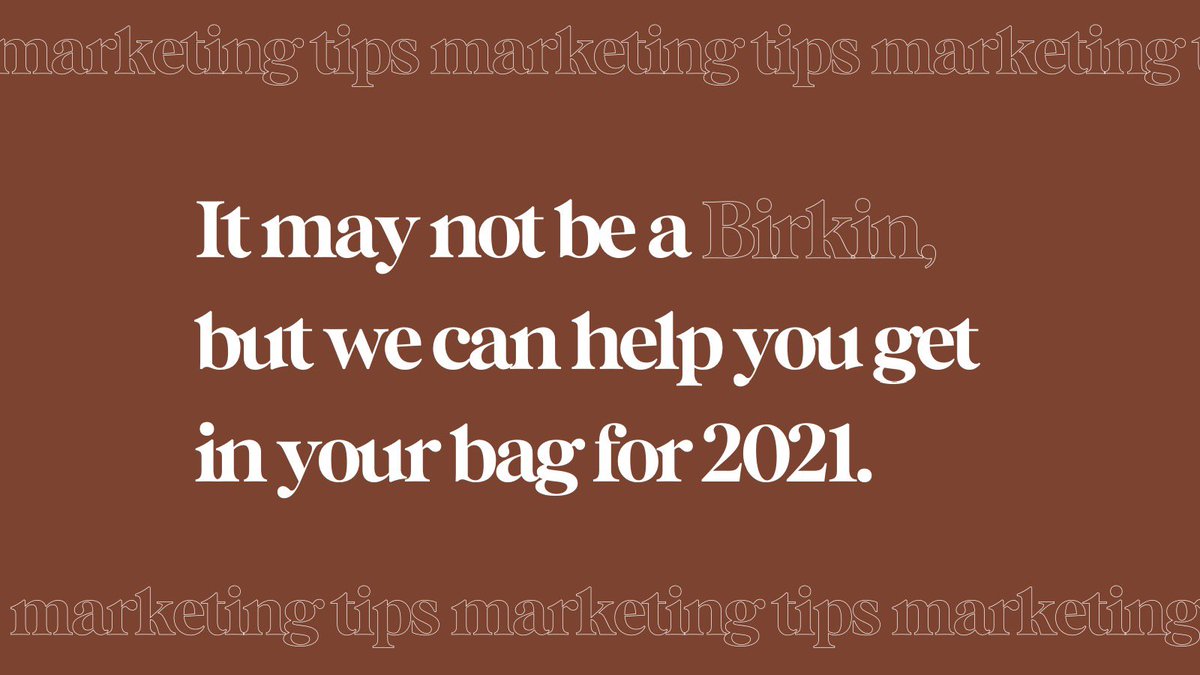
• • •
Missing some Tweet in this thread? You can try to
force a refresh


